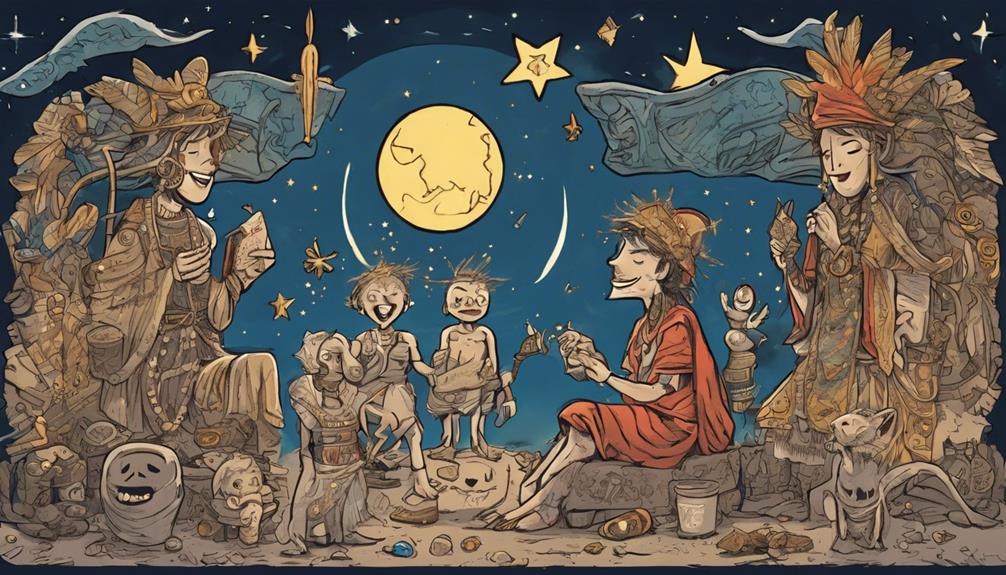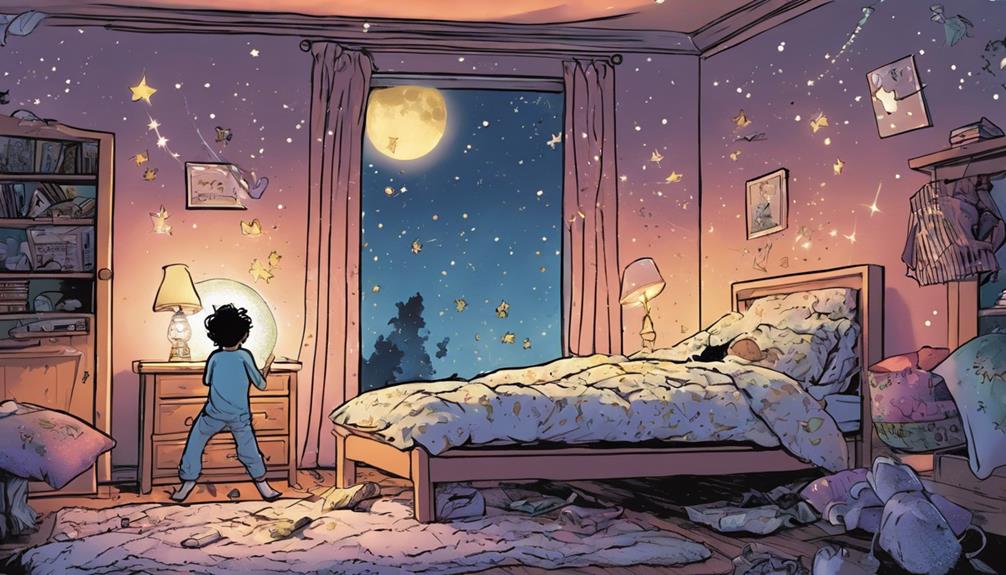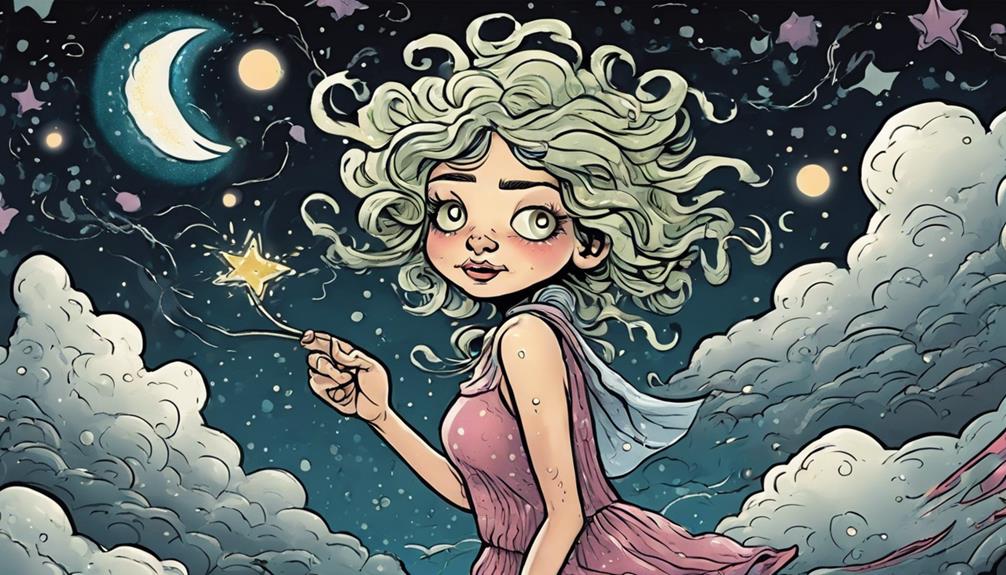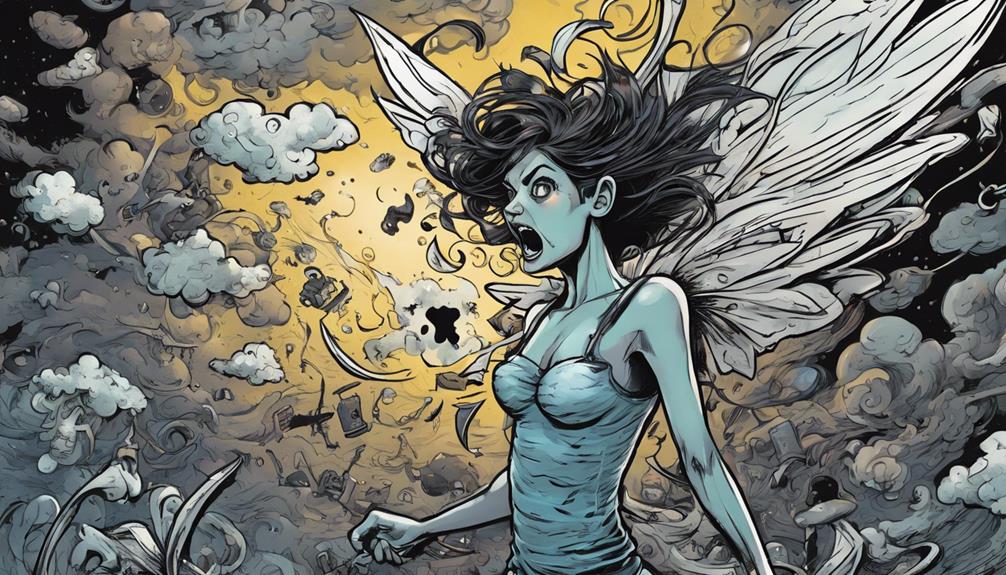The Tooth Fairy isn't merely a myth; recent research shows it carries real significance in children's lives. This beloved figure helps kids cope with the emotional challenges of losing teeth, fostering imagination and creativity. Through rituals like placing teeth under pillows, children experience excitement and develop resilience. Different cultures celebrate tooth loss in unique ways, highlighting its universal importance. The Tooth Fairy also encourages discussions about value and money. So, while some may question its reality, the benefits it brings to emotional growth and family traditions are undeniable. There's much more to explore about this enchanting topic!
Key Takeaways
- The Tooth Fairy symbolizes cultural traditions and emotional growth, enhancing children's imagination and coping mechanisms during tooth loss.
- Research shows belief in the Tooth Fairy can positively impact emotional development and resilience in children.
- The Tooth Fairy myth fosters conversations about reality versus imagination, promoting critical thinking skills in young minds.
- Engaging with the Tooth Fairy helps children understand financial concepts related to currency and value in a playful manner.
Historical Origins of the Tooth Fairy

The Tooth Fairy's origins can be traced back to various cultural traditions that transformed the way we view losing baby teeth. In ancient Europe, especially among the Vikings, parents would bury their children's lost teeth to guarantee their good fortune and protect them from evil spirits. This practice highlighted the significance of teeth, symbolizing protection and prosperity.
As time went on, different cultures developed their own rituals surrounding lost teeth. In Spain and Latin American countries, for instance, kids celebrate with a character called 'Ratoncito Pérez,' a small mouse who collects teeth. This connection to animals reflects a broader understanding of how loss can be tied to new beginnings.
The concept of a fairy collecting teeth emerged in the early 20th century, particularly in American culture. This figure became a whimsical character that children could look forward to meeting after losing their teeth, turning a potentially sad moment into an exciting one. By creating a narrative around loss, the Tooth Fairy helps children cope with this natural milestone in a fun and imaginative way.
Ultimately, the Tooth Fairy represents a unifying blend of history, tradition, and creativity, enriching the experience of growing up.
Cultural Variations Around the World

When you think about the Tooth Fairy, it's fascinating to see how different cultures have their own unique traditions surrounding lost teeth.
In some places, children toss their teeth onto rooftops or bury them in the ground, each practice filled with meaning.
Let's explore these tooth traditions and discover the rich variety of customs around the world.
Tooth Traditions Worldwide
Around the globe, children celebrate the loss of their teeth with unique customs that reflect their cultural heritage.
In the United States, kids enthusiastically place their lost teeth under their pillows, hoping to find a small reward from the Tooth Fairy. In contrast, in Spain and many Latin American countries, children might leave their teeth under their pillows for Ratoncito Pérez, a little mouse who collects teeth and leaves gifts in return.
In some Asian cultures, children throw their lost teeth onto the roof or into the ground, believing this brings good luck for the regrowth of strong teeth. For instance, in India, children toss their lower teeth while asking for a strong upper tooth to grow in its place.
Over in Turkey, children hide their teeth in a special place, often accompanied by a prayer for healthy teeth.
Each tradition showcases how societies embrace the milestone of losing teeth, turning it into a cherished rite of passage. It's fascinating how, despite the variations, the underlying theme is always the same: celebrating growth and change in a child's life.
Unique Practices by Culture
Different cultures have their own unique practices surrounding the loss of teeth, each reflecting their specific beliefs and values.
In Spain and many Latin American countries, for instance, children celebrate the 'Ratoncito Pérez,' a small mouse who exchanges lost teeth for coins. This tradition emphasizes the idea of transformation and reward, just like the Tooth Fairy.
In Japan, kids often toss their lost teeth into the roof or bury them in the ground, depending on whether the tooth is from the upper or lower jaw. This practice symbolizes a wish for strong adult teeth to grow in place of the lost ones. Meanwhile, in some parts of Africa, children might throw their teeth into a fire, believing it will bring good luck.
You'll find that these traditions share a common thread: they help children cope with loss while fostering excitement about growing up.
Psychological Impact on Children

When you encourage your child to believe in the Tooth Fairy, you're not just sharing a fun tradition; you're also nurturing their imagination and emotional growth.
This belief can help kids navigate experiences of loss, like losing a tooth, by framing it in a positive light.
Understanding the impact of these fantastical figures can reveal how they shape children's emotional development.
Belief in Fantastical Figures
Believing in fantastical figures like the Tooth Fairy can spark children's imaginations and contribute to their emotional development. When you encourage your child to embrace these whimsical beliefs, you're helping them explore creative thinking. This playful engagement allows them to weave stories and create scenarios, enhancing their cognitive skills.
Moreover, these beliefs often serve as a comforting mechanism. Children find security in the idea that magical beings are watching over them, which can reduce anxiety during changing phases, like losing a tooth. This sense of wonder helps them cope with change, making life's little milestones feel special.
You may also notice that discussing these figures opens up conversations about reality versus imagination. It gives your child the chance to express their thoughts and feelings, fostering critical thinking. They learn to question, hypothesize, and draw conclusions, skills that are essential throughout life.
Ultimately, these fantastical beliefs can strengthen the bond between you and your child. Sharing in the magic of the Tooth Fairy creates memorable experiences, reinforcing trust and communication. So, embracing these myths can have a lasting positive impact on your child's psychological well-being.
Emotional Development and Imagination
Embracing fantastical beliefs like the Tooth Fairy not only fuels children's imaginations but also plays a significant role in their emotional development. When you encourage your child to believe in magical figures, it opens a world of creativity and wonder. This imaginative play allows them to explore different scenarios, enhancing their problem-solving skills and fostering cognitive flexibility.
Additionally, these beliefs can serve as a safe space for children to express their feelings. The act of placing a tooth under the pillow becomes a ritual that embodies excitement and anticipation. It's a way for your child to experience joy and the thrill of surprise, all while building positive associations with change.
Moreover, engaging in this imaginative play promotes empathy. As children share stories about the Tooth Fairy with their peers, they learn to reflect on others' feelings and perspectives. This enhances their social skills, helping them navigate friendships and interactions.
In essence, believing in figures like the Tooth Fairy enriches your child's emotional landscape, allowing them to embrace creativity, joy, and empathy—all essential components of healthy emotional development.
Coping With Loss Experiences
Coping with the loss of a tooth can be a child's first encounter with change and loss, teaching them valuable lessons about resilience and adaptation. You might notice your child feeling a mix of excitement and sadness when it happens. On one hand, they're thrilled about the Tooth Fairy, but on the other, they may feel anxious about losing something they've relied on for a while. Acknowledge these feelings; it's essential for their emotional growth.
Use this opportunity to discuss the significance of change. Explain how losing a tooth is a natural part of growing up, just like other milestones they'll face. Encourage them to express their feelings—whether it's fear, excitement, or confusion. Validate their emotions, letting them know it's okay to feel sad about something they loved.
Additionally, create rituals around the experience, like writing a note to the Tooth Fairy or celebrating the tooth's departure with a fun family activity. These actions can help your child process loss while fostering a sense of security.
Ultimately, guiding them through this experience will build their emotional intelligence, preparing them for future challenges that come with change.
Recent Research Findings

Recent studies have shed light on how children's perceptions of the Tooth Fairy can influence their understanding of money and value. Researchers found that when kids receive money for their lost teeth, they begin to associate the act of losing a tooth with financial gain. This connection helps them grasp the concept of currency and its worth at an early age.
Additionally, these studies highlight how the Tooth Fairy myth can serve as an engaging way for children to discuss money with their parents. When kids ask about the Tooth Fairy, it opens up conversations about saving, spending, and the importance of valuing money. This playful narrative allows them to learn about financial responsibility in a fun and relatable context.
Moreover, findings indicate that children who actively participate in this myth often show greater financial literacy as they grow older. They develop skills like budgeting and saving, which can benefit them in their adult lives.
The Tooth Fairy's Role in Parenting

The Tooth Fairy can be a fun tool for parents to teach kids about the value of losing a tooth and the excitement of rewards. By incorporating this whimsical character into your family traditions, you create a memorable experience that fosters anticipation and joy. When your child loses a tooth, you can turn the occasion into a little celebration, reinforcing positive feelings about growth and change.
As your child places their tooth under the pillow, you can use this moment to discuss the importance of dental hygiene and caring for their teeth. Explain how healthy habits lead to strong, beautiful smiles. This conversation not only makes the Tooth Fairy more relatable but also provides a valuable lesson.
Moreover, you can personalize the experience by writing a note from the Tooth Fairy or leaving small surprises like coins or a special gift. This adds an element of magic and makes the experience unique for your child. In this way, the Tooth Fairy becomes more than just a myth; she serves as a catalyst for valuable lessons, cherished memories, and family bonding moments that you'll both treasure for years to come.
Rethinking Childhood Myths

Many parents find themselves questioning the value of childhood myths like the Tooth Fairy as they consider their impact on children's understanding of reality. While these tales may seem harmless, they also raise important questions about honesty and trust between parents and children. You might wonder if perpetuating these myths helps or hinders your child's development.
Here's a quick comparison of the pros and cons of childhood myths:
| Pros | Cons | Alternatives |
|---|---|---|
| Sparks imagination | Can lead to mistrust | Encourage creativity |
| Creates fun traditions | May confuse reality | Share real-life stories |
| Eases fear of losing teeth | Can overshadow facts | Use educational games |
Frequently Asked Questions
Do Adults Ever Believe in the Tooth Fairy?
You might find that some adults humor the idea of the Tooth Fairy, especially when interacting with children. While they usually don't genuinely believe, they enjoy the magic it brings to childhood experiences.
How Much Money Does the Tooth Fairy Typically Leave?
Typically, the Tooth Fairy leaves around $1 to $5 per tooth, depending on your area and family traditions. You might find that some kids receive more, while others stick to the classic dollar.
What Should Parents Tell Children About the Tooth Fairy?
When talking to your kids about the Tooth Fairy, keep it fun and magical. You can encourage their imagination, sharing stories or traditions, while letting them know it's okay to question and explore their beliefs.
Are There Any Negative Effects of Believing in the Tooth Fairy?
Believing in the Tooth Fairy can lead to disappointment when kids discover the truth. It might also create trust issues if they feel deceived, but it can spark imagination and fun in childhood experiences.
How Can Parents Create Fun Tooth Fairy Traditions?
Did you know 85% of kids look forward to the Tooth Fairy? To create fun traditions, you could write notes, personalize the exchange with special coins, or leave little surprises to make the experience memorable.
What Does the New Research Say About the Existence of the Tooth Fairy?
New research has officially debunked the top tooth fairy myths busted. A recent study from the National Fairy Association found no evidence to support the existence of a supernatural being who collects teeth and leaves money under pillows. The tooth fairy appears to be nothing more than a children’s legend. Furthermore, the research also highlighted the cultural and societal significance of the tooth fairy myth, showing how it serves as a way for parents to encourage good dental hygiene and help children cope with the discomfort of losing their baby teeth. These new discoveries about teeth and fairy tales provide insight into the ways in which folklore and tradition can shape childhood experiences and beliefs. Despite the lack of evidence for the tooth fairy’s existence, the myth continues to be a beloved and enduring part of many children’s lives.
Conclusion
In light of recent findings, you might want to reconsider the tooth fairy's place in childhood.
While many see her as a mere figment of imagination, she serves a deeper purpose in helping kids navigate changes.
Embracing this enchanting figure can strengthen bonds between you and your child, turning the loss of a tooth into a memorable rite of passage.
So, don't throw the baby out with the bathwater—cherish the magic while nurturing their development.









